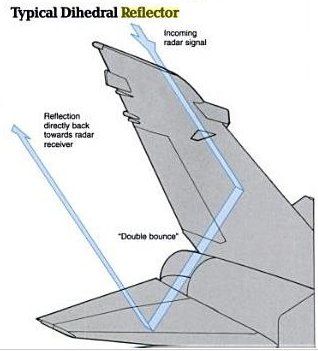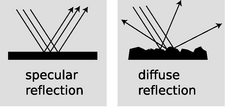We discuss aircraft radar cross sections and say the Gripen, Eurofighter, Rafale, etc have radar cross sections below one. We then discuss the fact (???) that putting any external loads on these planes suddenly increases the radar cross section several times fold. Considering that the ordinance and EFT are much smaller physically, would it not be cheaper for the air-force to ask the ordinance manufacturers to work on RCS reduction of ordinance?
We say wings and vertical stabilisers are bad for RCS. There is very little of these of ordinance.
We talk for jet fan blades. These rarely are there of ordinance.
Exhaust heat signature only on missiles after being fired and only for the time the motor is burning.
Unless if we are missing something big, I find it hard to understand why four missiles on a JF-17 will contribute more to radar return that the bulk of the plane itself.
I want to think part of the answer is that with RCS, 2 + 2 ≠ 4
Please lets discuss LIKE ADULTS!
Here is the
FIRST thing you should understand about radar cross section (RCS): That
EVERYTHING is a contributor to the final RCS value. Meaning every individual component, from a surface scratch that you can barely feel with the most sensitive skin area -- your palm -- to those large flight control surfaces, each item has its own RCS value.
The second thing you should understand is that an aircraft is a complex body. In radar detection, the only simple body in existence is the sphere. We can eliminate the sphere from our discussion.
The third thing you should understand is that in a complex body, reflected and diffracted signals interact with each other in ways that we have only barely begun to model and predict. When I say 'barely' I mean post F-117. In many ways, the F-117 has more fortune working for its low RCS than the B-2, F-22, and F-35.
Here is the simplest example of those interactions...
A 90deg corner as produced by the above example is a serious no-no when the goal is to reduce RCS. It is called 'target corner reflector' or simply 'corner reflector'. This configuration can be created by any material, even paper, and metal is the worst. This structure
GUARANTEE that of all complex arrangements on a complex body, most (not all) of whatever amount of radar signal power hitting that structure will be reflected back to source direction.
The above is a 'macro' view of this complex body we call an 'aircraft'.
Here is the 'micro' view...
Since no surface is ever perfect, we can see that those microscopic corner reflectors are very much contributors to the final RCS value. The interactions between these reflected and diffracted signals in a complext body give us 'constructive' and 'destructive' interference and it is they that we have the most problems modeling and predicting. Obviously we do not want constructive interference but aerodynamic necessities may not give us all the destructive interference we would like to create.
Now all you have to do is look
FOR these contributors on every missiles, bombs, pylons, and fuel tanks that we can hang under the wings and see why from a radar detection perspective, pre-F-117 aircrafts are quite 'messy' or 'noisy'. No one who value his freedom will tell you how much these 'doodads' contribute to the final RCS value of a fully loaded for combat aircraft but all we have to do is look at the current generation of 'stealth' designs with their emphasis on hiding these 'doodads' to make an educated guess on how much they contribute. It is very very considerable and the JF-17 is no exception no matter how much anyone wish otherwise.
DO NOT be misled by individual RCS values. Item three as I stated above can
CUMULATIVELY make all the missiles, the bombs, the external fuel tanks, and the pylons that carries them as large an RCS value as the aircraft itself. Perhaps even greater.
Since the debut of the F-117, manufacturers are busy trying (with little success) to reduce the contributorships of externally carried stores. The problem lies with the second item I said above. The more protrusions you create, the more the complex the body and the greater the third item.
the external weapons surely introduce drag and increased RCS.
its not like total RCS is something like
RCS for plane = 3
RCS for external misiles = 2
RCS for external fuel tank = 2
so totla RCS is 7, no its not like that!
Actually...It is very much like that. We effectively sum up all the individual RCS and perform full scale model radar testing. Sometimes the results surprised us because of unexpected destructive interference that give us a lower final RCS value than anticipated. Sometimes the results are greater so then it is back to the proverbial drawing board we go. Some designs may not give us the option of re-doing our work because any changes could catastrophically compromise aerodynamic necessities. Like it or not, aerodynamics comes first.
The study is being carried out to reduce the aircraft's external load RCS.For it to happen cocoon techniques are used.The cocoon concept is based on placing pylon-mounted stores inside radar absorbent or deflective casings that would be shed before weapon engagement. The casing would ideally blend the weapon with the aircraft wing to eliminate radar cross-section returns generated by the pylon.
The mechanical complexities of the weapons system itself would increase dramatically. We now have to install another safety in that we do not want to launch a missile unless the 'stealth' pod is completely discarded. We have to design that discard mechanism to be %99.999 reliable. Not impossible, just very difficult to engineer and deploy.




 ).
).
 ..you an engineer or something.
..you an engineer or something.




